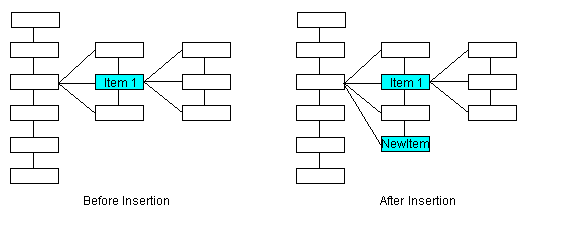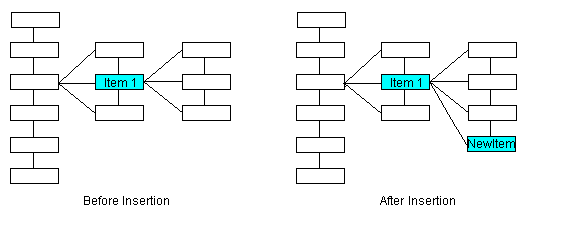Insert(DicomIod,bool,long,string,DicomIodType,DicomIodUsageType,string) Method
Inserts a new item in the IOD Structure.
public DicomIod Insert(DicomIod neighbor,bool child,long code,string name,DicomIodType type,DicomIodUsageType usage,string description)
Public Overloads Function Insert( _ByVal neighbor As DicomIod, _ByVal child As Boolean, _ByVal code As Long, _ByVal name As String, _ByVal type As DicomIodType, _ByVal usage As DicomIodUsageType, _ByVal description As String _) As DicomIod
public DicomIod insert(DicomIod neighbor, boolean child, int code, String name, DicomIodType type, DicomIodUsageType usage, String description) public:DicomIod^ Insert(DicomIod^ neighbor,bool child,int64 code,String^ name,DicomIodType type,DicomIodUsageType usage,String^ description)
Parameters
neighbor
contains an item in the IOD Structure. The inserted item will be inserted as a neighbor to this item, or as a child, depending on the value of child.
child
true to insert the new item as the last child of neighbor, false to insert the new item as the last sibling of neighbor.
code
The Tag Information Object Definitions.
name
The name of the inserted item
type
The type of Information Object Definition you are working with.
usage
Indicates whether the Information Object is mandatory, conditional or optional, and the type of usage. For more information on mandatory, conditional and optional usage, refer to An Overview of the DICOM File Format or the DICOM Standard.
description
The description of the inserted Tag Information Object Definition.
Return Value
A DicomIod class containing the newly inserted item.
- The illustrations below show how items are added to the IOD Structure (internally maintained as a tree), based on the value of child.
- For the sake of these illustrations, the order of siblings is top to bottom. Therefore, since added items become the last sibling or the last child, these are drawn at the bottom of the appropriate group of items.
-
In this illustration, neighbor points to Item 1 and child is false. The new item is added as the last sibling of Item 1
In this illustration, neighbor points to Item 1 and child is true. The new item is added as the last child of Item 1.


Reference
© 1991-2020 LEAD Technologies, Inc. All Rights Reserved.
